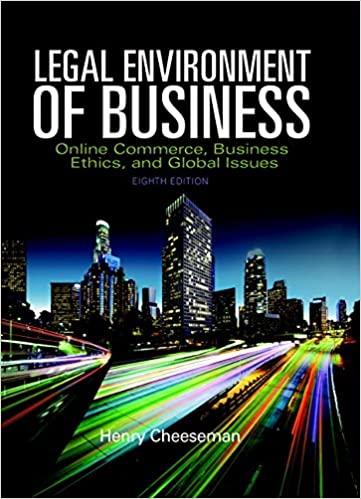Question
1. Introduction : What are the lockout laws? Why were they implemented (assaults in Kings Cross)? Explain the purpose of the 2014 Liquor Lockout laws.
1. Introduction: What are the lockout laws? Why were they implemented (assaults in Kings Cross)? Explain the purpose of the 2014 Liquor Lockout laws. Provide a timeline from 2012-2016.
2. Policy Actors and Institutions: Who are the policy actors and institutions involved in the implementation of the NSW Government 2014 Liquor Lockout laws? What were their roles/contributions? (Some actors/institutions include medical groups and health professionals, unions, businesses, the media, research groups and the coalition of law enforcement service).
3. Agenda Setting: What was the agenda setting process for the 2014 NSW Liquor Lockout laws?
Definition: Agenda-setting is a foundational step in the policy process, as only limited issues, topics, and problems make it onto the agenda. Agenda setting refers to the problems and alternative solutions gain or lose public and politicians' attention, however, activities of actors and groups can cause issues to gain greater attention(Birkland, 2015, p. 168
4. Policy Formulation: what was the policy formulation process for the 2014 NSW Liquor Lockout Laws?
The policy formulation stage is the beginning of preparing the potential course of action to address the issue of alcohol-fuelled violence that has been acknowledged on the governments agenda and has been recognised as a public problem (Howlett & Ramesh, 2003, p. 143).
5. Policy Decision making: How was the decision made about implementing lockout laws in NSW 2014? i.e. Include info about the Cabinet; committee; Premier O'farrell. What was the evidence based plan of action?
The decision-making stage of the policy process involves the selection of one or more of the many options that have been debated are approved as an official course of action (Howlett, et al., 2009, p. 139).
6. Policy Instruments: What were the instruments required to accomplish a reduction alcohol-related harm? What instruments did the NSW Government enact (e.g free buses, freeze on liquor licences)? Was media coverage used to communicate the policy goals?
Definition of policy instruments (FYI): For the government to achieve their policy goals, there are mechanisms and strategies put in place as instruments to aid the effectiveness of the policy (Maddison & Denniss, 2013, p.83).
7. Implementation of the 2014 NSW Liquor lockout law: What was the implementation process? Were clubs/bars against the laws? Were there protests/controversy? Was the implementation of the lockout laws successful in reducing harm?
8. Evaluation: Evaluate the implementation of the liquor lockout laws. Did it reduce alcohol related harm? Include statistics from ABS.
9. Conclusion: sum up everything.
Step by Step Solution
There are 3 Steps involved in it
Step: 1

Get Instant Access to Expert-Tailored Solutions
See step-by-step solutions with expert insights and AI powered tools for academic success
Step: 2

Step: 3

Ace Your Homework with AI
Get the answers you need in no time with our AI-driven, step-by-step assistance
Get Started


